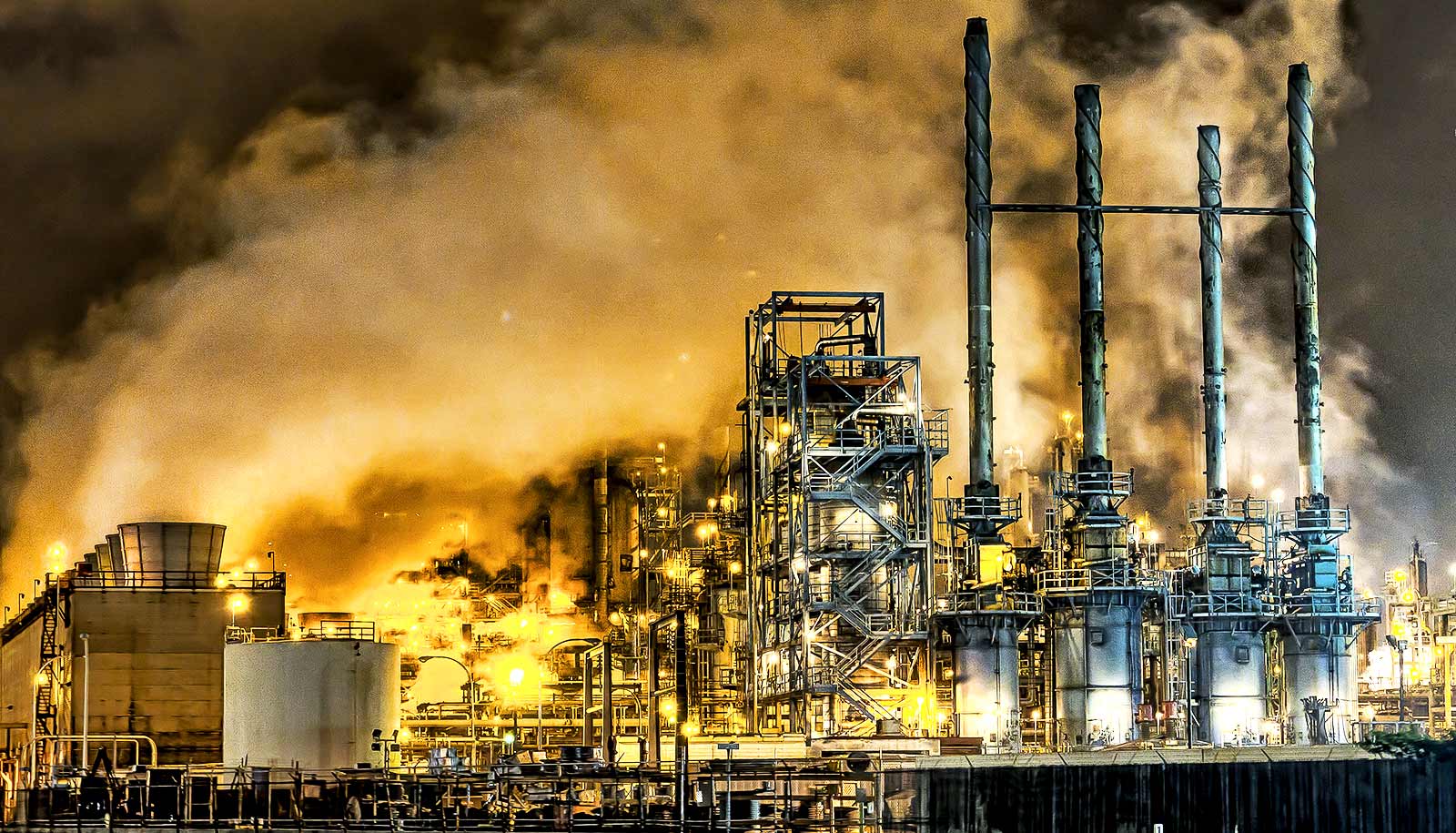A federal trial pitting two cities against major oil companies took a surprising turn when an oil company lawyer largely confirmed the science that connects the burning of oil to climate change damages—but not the blame.
The case in San Francisco is weighing the question of whether climate change damages, including increasingly frequent droughts, floods, and other extreme weather, connected to the burning of oil are specifically the fault of the companies that extract and sell it.
The judge in People of the State of California v. BP P.L.C. et al. had both the plaintiffs—the cities of Oakland and San Francisco—and the defendants—several major oil companies—answer basic questions about climate change in a tutorial format.
Katharine Mach, a senior research scientist at the Stanford University School of Earth, Energy & Environmental Science, and Deborah Sivas, professor of environmental law, gave their perspectives on the climate tutorial, the science in question, and the role of the judiciary in confronting climate change challenges.
Why did the judge take such an unorthodox approach, in requesting a tutorial from the parties in this suit?
Sivas: The way the questions were drafted—relatively straightforward questions of physical science that lead, inexorably, to the Intergovernmental Panel on Climate Change (IPCC) conclusions—and the way the judge engaged the parties during the proceeding make it pretty clear that the court largely understands climate science already.
The tutorial revealed that there is not going to be a lot of fighting about the fact that human activities are causing accelerated climate change. Although it wasn’t an evidentiary proceeding with decisions about the admissibility of factual information, it would be very difficult at this point for the defendants to backtrack and contest the anthropogenic causes of climate change. By holding this proceeding, the judge circumvented what could have been a couple of years of jostling and motion practice in discovery.
Secondly, the tutorial appears to have flushed out and previewed the oil industry’s legal theory in defending the case. From what I can tell, Chevron’s lawyer intimated that the oil companies’ defense will be that the science of anthropogenic causes was not clear until a few years ago and now that it is clear, the industry isn’t denying it; and that the industry shouldn’t be held liable because it is the use of fossil fuels by each and every one of us that is causing the problem, not the mere extraction of the material from the ground.
Finally, I suspect the court was using this novel case as an opportunity for a bit of public education. The judge likely knew that the media would cover the tutorial proceeding and that there would be some level of public interest in what the oil companies had to say. The fact that oil companies essentially conceded and reiterated the conclusions of the IPCC in open court makes the landscape even more challenging for the last few climate deniers still out there.
Why do you think both sides are largely in agreement on the science?
Mach: Unsurprisingly, the experts who presented for the cities and also Chevron’s lawyer turned to comprehensive assessment of the existing body of research to draw their conclusions.
For the past three decades now, the world’s scientists and governments have come together to take stock of the state of knowledge. It’s a grand partnership called the Intergovernmental Panel on Climate Change. Hundreds of authors from around the world pore over the literature, compare results across studies and draft text. Thousands of experts globally then vet the drafts in multiple rounds of monitored review. In the end, many thousands of publications are cited in thoroughly evaluating what is known and what is not at present.
With each decade passing, the evidence has amassed. These reports have underscored that the climate is warming, unequivocally. Climate change and the impacts we are now experiencing are the result of our emissions of heat-trapping gases.
What can science tell us about whether companies or individuals are more responsible for climate change-related impacts?
Mach: Science doesn’t have a single best answer for who is most responsible for the climate challenge or how we should respond.
For example, risk assessment across all available evidence underscores that climate change unfolds across generations.
Exactly how important is the present versus the future? Are people who have emitted the most heat-trapping gases historically—or who are emitting the most right now—more obliged to take action? Building from the science, these kinds of judgments come down to values and the choices societies are making—and maybe in this case, the courts.
Are there any points of scientific disagreement between the parties in this case?
Mach: It’s hard to say how science will reappear through the course of the legal proceedings to come.
Discussions during the tutorial suggested that the different parties may well take different approaches to the complexities of climate change, for example, the deep uncertainties about how societies, policies, and technologies will evolve many decades into the future and the implications for climate change solutions needed now.
Climate change assessment has long emphasized that uncertainties are absolutely integral to the climate challenge and they will persist. Responding to climate change is about managing the resulting risks and making critical decisions about our future.
Where do you see this case going?
Sivas: It is unclear what this suit, and the others like it, will achieve at the end of the day. If the plaintiffs unearth damaging internal industry documents or force the industry to concede the foundational facts once and for all, that surely serves one public purpose.
Climate change could turn military bases into foreign policy problems
But whether state and local governments, which are experiencing rising sea levels and related climate impacts, will actually obtain compensation from the industry is a much more complex and uncertain question.
Ultimately, the plaintiffs must show that a 50-year or whatever delay caused by the industry cover-up is the cause of damages that they are experiencing today. That’s a tall order.
What legal or political precedent might this case set?
Sivas: I see this case as part of a growing line of innovative lawsuits, like Juliana v. United States and Village of Kivalina v. ExxonMobil, where members of the public are testing out legal theories and strategies designed to shake the country out of its complacency and highlight the need for much more urgent and robust action.
Once we geoengineer the climate, we can’t stop abruptly
Source: Stanford University



